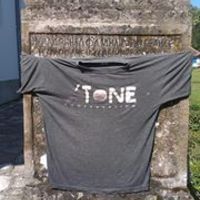- Heritage Conservation, Lime mortars and plasters, History of lime mortar, Metakaolin as Hydraulic Additive for Lime Based Mortars and Plasters, Limestone, Dating of old lime mortars and plasters, and 13 moreHistoric Lime Mortars, Lime Mortar Characterization, Sandstones, Alkoxysilanes, Stone Conservation (Conservation), Conservation/restoration Stone/mortars, Stone conservation, Analysis of Pigments on Ancient Artifacts, Restoration and Conservation of Ancient and Historic Buildings and Structures, Museum environment, Consolidation of Structures In Situ, Consolidation of Painted Ancient Stone Surfaces, and Preventive conservationedit
<p>The design of restorative mortars for historical buildings and artefacts is always a challenging task, with multiple... more
<p>The design of restorative mortars for historical buildings and artefacts is always a challenging task, with multiple requirements which have to be achieved and harmonized. Essentially, restorative mortars have to comply with chemical, mineralogical and mechanical compatibility criteria, which also include formation of contact zone, tensile strength, porosity and visual properties (colorimetric parameters). One of the successfully restored examples is the mosaic discovered broken in 2014 with severely disturbed positioning of fragments. The mosaic represents head of Medusa dated from Late Roman period and found at the archaeological site in Skelani, Bosnia and Herzegovina.</p><p> </p><p>The case study presented in this abstract is a good practice example of collaboration between restoration and science which shortens the period for attaining relevant inputs and gives confidence to future restoration decisions. The investigation reviled that the mosaic bedding layer was of very good quality and has allowed fragments of various sizes to be preserved (tesselatum, nucleus and even rudus layer on some fragments). The objective of the restoration was to preserve remains of the original bedding layer and to connect and stabilize groups of individual fragments. The idea was to design compatible restoration mortar which will support the requirements for future mosaic presentation.</p><p> </p><p>The characterization of historic inorganic binder samples, performed in the Laboratory for Materials in Cultural Heritage, Faculty of Technology, University of Novi Sad, provided invaluable information about the composition of mosaic bedding layers, their preparation, and moreover about degradation mechanisms in regard to centuries of its use and environmental conditions. It was reviled that the original inorganic binder is a lime based mortar with brick fragments imbedded. A strong bonding with preserved bedding layers of mosaic fragments and a set of specific compatibility objectives framed attempts to design compatible restorative mortar. In the laboratory a set of restorative mortar samples were prepared with similar chemical and mineralogical composition, porosity and visual properties (colorimetric parameters), mechanical properties and formation of contact zone between original and restorative mortar. The laboratory prepared samples were artificially aged in weathering chamber (temperature, humidity, UV/VIS radiation) simulating exposal to real environmental conditions in all four seasons. The weathering regimes were set according to temperature and humidity profiles for the relevant region. Finally, the compatibility of restoration mortar with original one was evaluated and confirmed, what enabled conservators to proceed with restorative works.</p>
